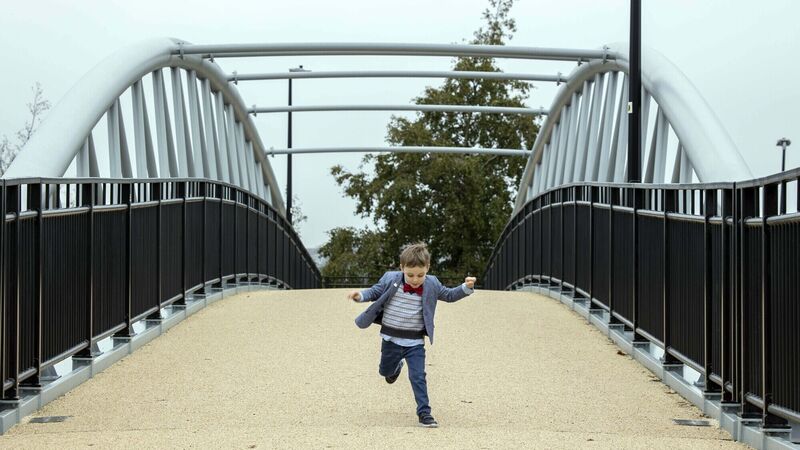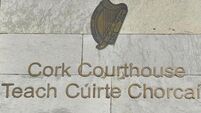Vernon Mount Bridge: Cork City’s newest pedestrian bridge officially opens

Jamie Murphy Curtin, aged 4, was fascinated watching the construction of the new bridge and wrote to the Lord Mayor of Cork during the naming consultation process to suggest the name "Jamie's Bridge". He was a special guest of the Lord Mayor at the opening of Vernon Mount Bridge. Picture: Clare Keogh
The opening of Cork’s newest pedestrian and cycle path over the city’s busy N40 is tangible proof of the Green Party’s commitment to spend €1m a day on active travel projects, the party’s leader said on Friday.
Eamon Ryan was speaking as he joined the Lord Mayor of Cork Cllr Kieran McCarthy to officially open the Vernon Mount Bridge which spans the South Link Road to link Grange and Frankfield to Tramore Valley Park, and onwards to Douglas and the city centre.
Funded by the National Transport Authority (NTA), the four-metre wide, 63-metre long bridge and its one-kilometre southern approach pathway, is accessible for people with restricted mobility needs and includes environmentally sensitive public lighting.
Cork City Council also acquired 13-acres of woodland as part of the project to increase the overall biodiversity and green park area within the city.
The bridge name was chosen through a public naming submission process run by the council earlier this year which attracted almost 600 suggestions. Those entries were then whittled down to the six most popular, and were voted on by city councillors last July.
The name was chosen because the bridge is located close to the former Georgian stately home, Vernon Mount House, which now lies derelict.
Mr McCarthy described the bridge as a strategic transport project that the people in Grange and Frankfield, many of whom can see Tramore Valley Park from their homes but who were separated from it by the N40, have been waiting a long time for.
“It’s a huge bonus to the community here. Now they can safely travel on foot or by bike to and from Grange, Tramore Valley Park, Douglas and the city centre without having to get in their cars. It will go a long way to improving the quality of our environment and indeed the quality of life for the people who will use this new route,” he said.
Transport Minister Eamon Ryan said: “When we [the Green Party] came into government and committed to spend €1m a day on active travel it was a number on a page but now, through projects like this, we can see what that commitment looks like for people, for nature and for the future of our cities, towns and villages.”
Cork City Council chief executive Ann Doherty said the project supports people wanting to make more sustainable transport choices which will help reduce car dependency and ease traffic congestion in the city.
The CEO of the NTA, Anne Graham, said the bridge is one of a number of exciting active travel projects that it is working on with the city council for delivery in the coming months.

The bridge project was originally commissioned and brought to planning stage by Cork County Council but following the 2019 city boundary extension, the project was developed and completed by the city council.
The bridge was built by Thompsons of Carlow, the company which also made the Mary Elmes Bridge in Cork City, and was lifted into place using a 650-tonne crane in April.
The construction works on site were carried out by Jons Civil Engineering.
Instead of using concrete retaining walls, the engineers decided to use 25,000 reinforced earth bags sown with grass seed to create geo-strengthened embankments.
Each bag had to be individually placed by hand, and the construction of the embankments took about five months.















